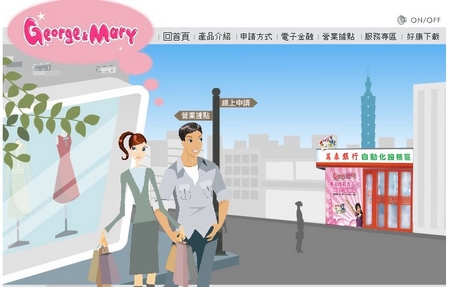Or in other words, how to break the bank!
My wife was standing over my shoulder last time I wrote my very uneventful credit card statement for January 2008. She said in pointed tones: “Who cares about your credit card spending?”… Well, of course, I do!
I usually include the credit card spending report for three reasons:
1. to encourage me to pay off the entire amount regularly;
2. to share with my readers different parts of my life, because each of my purchases has a story of some sort; and
3. to encourage readers to share their spending habits, so that we can all learn from our mistakes.
So here goes, February’s spending… And it isn’t pretty.
First, I racked up NT$26,413 worth of spending, some of related to our vacation in TaiChung and Tainan. Some of it related to business expenses. And some of it related to personal expenses.
Business Stuff
During Chinese New Year we reorganized our school space yet again. This enabled us to improve our computer resources, expand our library area a little and make things more customer friendly. But it entailed some expenses, of which NT$7082 involved a trip to the local Ikea, where we purchased a much-needed IKEA office chair, valued at nearly $5000 (est.). We’d been eyeing that chair for a while, but had passed on it several times due to its relative expense. Other little things included picture frames for the walls, and other knick-knacks.
Online Stuff
I purchased a link on Linkworth to increase link sales last week. It wasn’t particularly expensive at US$8.50 for a featured link for seven days. But it coincided with a long weekend in the US. And generated no responses at all. I won’t bother with that avenue again.
Personal Stuff
Somehow because we had nearly two weeks vacation at Chinese New Year, we really spent a lot more on clothes, vacations, and food! I spent NT$4119 buying two sweaters, two shirts, socks, underwear, and some other clothes for winter in Taichung. And Christine also spent NT$3924 on clothes and trainers for herself.
Then in IKEA we additionally spent another NT$2330 on house stuff: none of which I can remember right now. And on the first day of our holiday, we ate out at TienMou Mitzukoshi Department store in the Thai Restaurant on the top floor. The food was excellent, and the weather was AWFUL, so we were so happy to eat something hot, delicious, and spicy! That was NT$1667.
And I nearly forgot we spent a night at a hotel in Taichung, called The Splendor. The room was quite big, and view was excellent as you saw in the competition. Even the breakfast was great, but the price was nearly double the price we paid for a much more pleasant hotel. It cost NT$3589 for one night in a double room.
Regular Expenses
Our regular expenses included three items: our CIGNA life insurance policy, but no mobile phone bill (they now only bill every 2nd month), and our interest payment of NT$64. Yes, I did it again: I didn’t pay the entire amount. I underpaid NT$1364 this time, and it cost an extra NT$64. Wow!
So that’s February’s expenses on my credit card.
